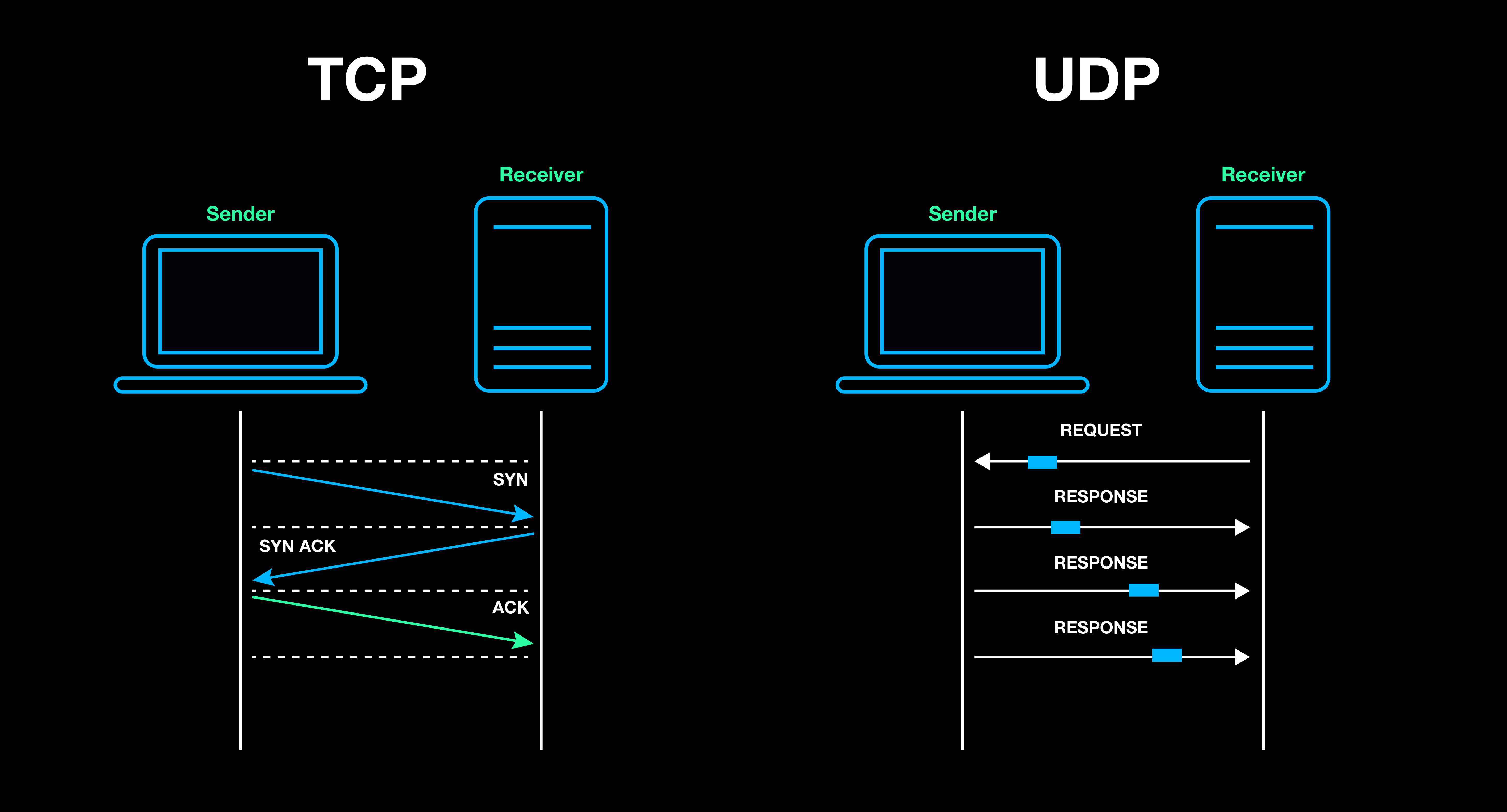
User Datagram Protocol (UDP)
- Definition: UDP stands for User Datagram Protocol, offering a simple and efficient way to send and receive data.
- Layer 4 Protocol: Positioned at Layer 4 of the OSI model, UDP provides a connectionless service for transmitting data.
- Port Addressing: Utilizes ports to address processes within a host, enabling communication between applications.
- Stateless Nature: UDP is stateless, meaning no prior communication or knowledge is stored on the host.
- Datagram Header: Comprises an 8-byte header for efficient data transmission.

UDP Use Cases
UDP finds application in various scenarios, including:
- Video streaming
- VPN (Virtual Private Network)
- DNS (Domain Name System)
- WebRTC (Web Real-Time Communication)
Multiplexing and Demultiplexing
- IP Target Hosts: UDP targets hosts based on IP addresses.
- Port Identification: Ports identify different applications or processes running on hosts.
- Multiplexing: Sender multiplexes data from multiple apps into UDP datagrams.
- Demultiplexing: Receiver demultiplexes UDP datagrams to route data to the appropriate applications.
Source and Destination Port
- Illustration: App1 on 10.0.0.1 communicates with AppX on 10.0.0.2.
- Destination Port: Identifies the receiving application (e.g., Port 53).
- Source Port: Enables the recipient to respond back effectively (e.g., Port 5555).
Summary of UDP
In summary:
- UDP is a straightforward Layer 4 protocol.
- It leverages ports for process addressing.
- Known for its stateless nature.
Anatomy of UDP Datagram

The structure of a UDP datagram:
- Header Size: The UDP header is compact at only 8 bytes in IPv4.
- Datagram Composition: Data is encapsulated within an IP packet as "data."
- Port Range: Ports are represented by 16 bits, ranging from 0 to 65535.
Pros and Cons of UDP
Pros:
- Simplicity
- Small header size leading to compact datagrams
- Bandwidth efficiency
- Stateless operation
- Low memory consumption
- Low latency due to minimal processing overhead
Cons:
- Lack of acknowledgment
- No guaranteed delivery
- Connection-less nature
- Absence of flow and congestion control
- Unordered packet delivery
- Vulnerability to security threats like spoofing
Common Use Cases for UDP
User Datagram Protocol (UDP) serves various essential functions in networking beyond live streaming of music and video. Here are some common use cases for UDP:
- Broadcast and Service Discovery:
- UDP is ideal for broadcast scenarios like service discovery, facilitating plug-and-play networks without the need to specify target hosts.
- Large Client-Server Applications:
- Applications with numerous clients connecting to a server benefit from UDP's stateless nature, reducing memory requirements and network traffic.
- Real-Time Applications:
- UDP is suitable for applications requiring speed and efficiency, such as time servers, DNS, NTP (network time service), and most video games.
- Chat Capabilities:
- Implementing chat features in applications can leverage UDP due to its simplicity and ability to dispatch events to all users without the need for a server.
- Online Gaming:
- Online games heavily rely on UDP for its low latency, fast data delivery, and real-time communication capabilities, making it preferable over TCP for gaming applications.
- Voice over IP (VoIP):
- VoIP services like Skype, Google Meet, and Zoom utilize UDP for real-time voice communication where delays in data transmission are unacceptable.
- Multicasting and Routing Update Protocols:
- Multicasting and certain routing update protocols like Routing Information Protocol can effectively utilize UDP due to its support for packet switching.
- Lossless Data Transmission:
- Applications that can tolerate some data loss without compromising quality or functionality benefit from UDP's efficient data transmission capabilities.
By understanding the nuances of UDP, network professionals can make informed decisions regarding protocol selection and implementation, balancing the protocol's advantages with its limitations for optimal network performance and security.


